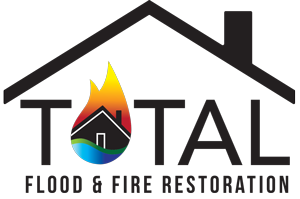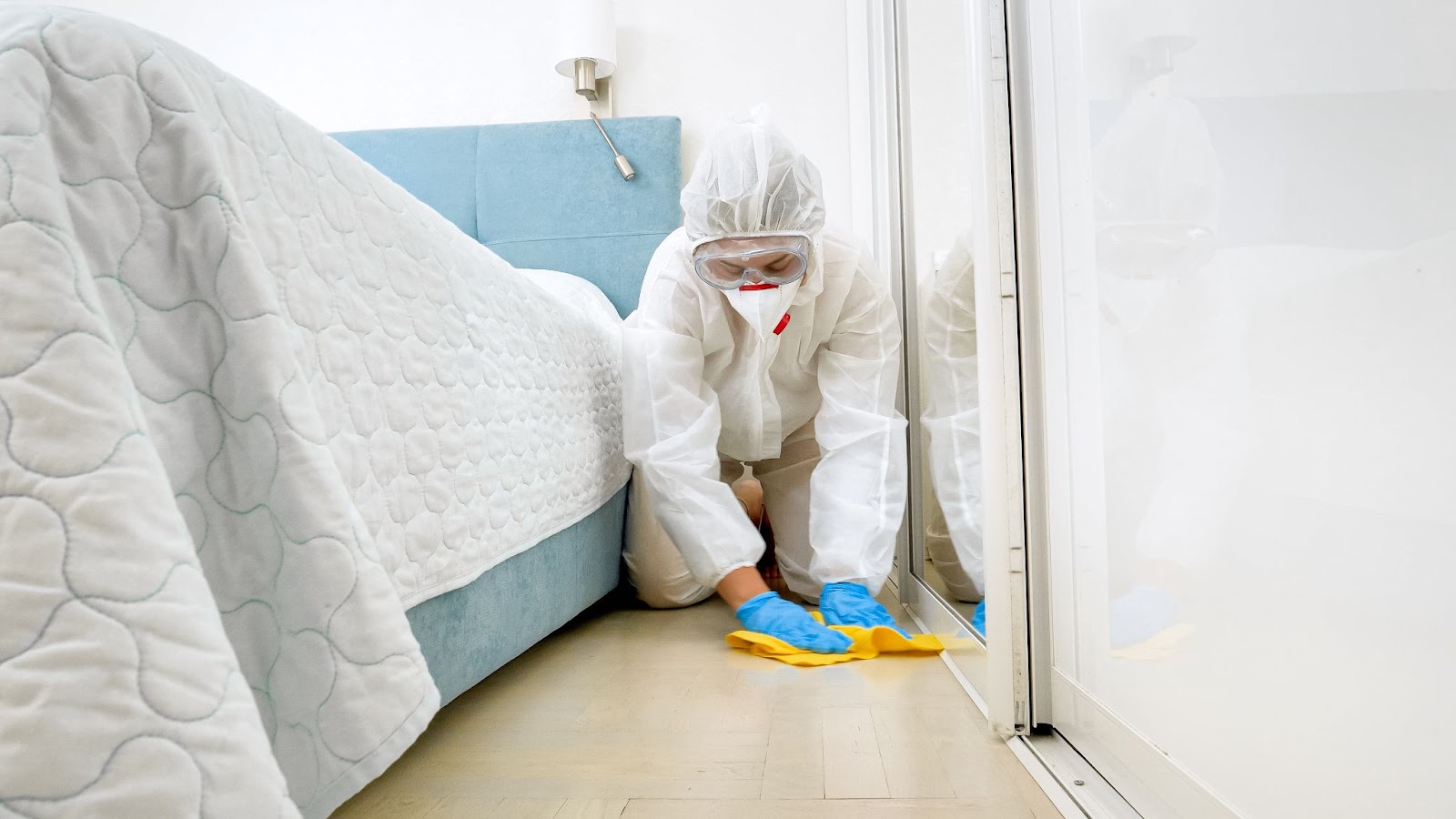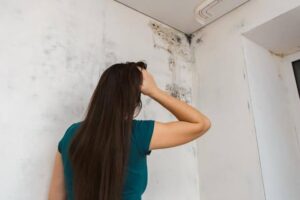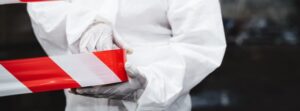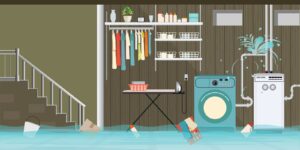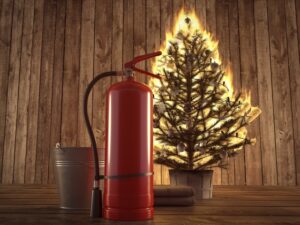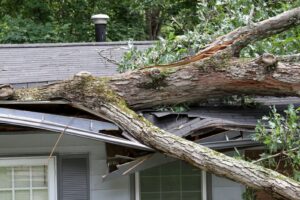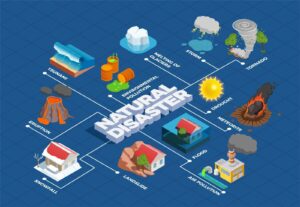A home should be a place of safety, but biohazards create serious health risks if not addressed quickly. Chemical spills, mold infestations, sewage backups, and biological contaminants threaten your well-being and spread rapidly without proper intervention. Identifying the type and severity of a biohazard allows you to take the right steps for cleanup and prevention.
Some biohazards, like minor mold growth or small chemical spills, may seem harmless at first but escalate into major problems if ignored. Others, such as sewage leaks, decomposing organic matter, or bloodborne pathogens, require immediate action to prevent illness and contamination.
Knowing when to handle a situation yourself and when to call professionals ensures effective remediation.
This guide explores the most common home biohazards, their risk levels, and the best cleanup strategies. Whether dealing with a minor spill or a hazardous contamination, following the right procedures protects your home and keeps your family safe.
Common types of home biohazards
A home biohazard threatens health and safety, requiring immediate attention to prevent serious consequences. Whether from household chemicals, biological waste, or structural damage, these hazards demand proper handling to eliminate risks effectively. Below are the most common biohazards found in homes and why they require careful management.
1. Chemical spills
Households store various chemicals for cleaning, cooking, and maintenance. Accidental spills or improper handling can create dangerous situations. Mixing bleach and vinegar releases chlorine gas, which can cause severe respiratory distress.
Lye, found in drain cleaners, burns skin and eyes upon contact. Cleaning spilled chemicals requires protective gear, proper ventilation, and, in severe cases, professional remediation.
2. Rotting organic materials
Decomposing food and organic waste creates the perfect environment for bacteria, fungi, and pests. When left unchecked, these materials release toxic spores, lowering indoor air quality and triggering respiratory issues. Rotting food attracts rodents and insects, worsening the contamination. Regular waste disposal and proper food storage prevent these hazards.
3. Sewage backup
Sewage overflows introduce dangerous bacteria, viruses, and parasites into the home. Blackwater contamination — water containing fecal matter — exposes occupants to E. coli, hepatitis, and other harmful pathogens. Cleaning raw sewage requires protective gear and industrial-grade disinfectants.
In most cases, professionals must handle the remediation to prevent long-term contamination and structural damage.
4. Mold and fungi
Mold spores exist in every home but multiply rapidly in damp environments. Leaking roofs, high humidity, and poor ventilation create ideal conditions for infestations. While small patches are manageable, widespread growth causes respiratory problems, allergic reactions, and structural damage. Some molds, such as black mold, produce toxins that severely impact health.
Homeowners should address mold early by improving ventilation, reducing moisture, and using proper remediation methods.
5. Harmful pathogens
Viruses and bacteria spread quickly through contaminated surfaces, increasing infection risks. COVID-19, flu viruses, and norovirus linger on objects and remain infectious for hours or days.
Without proper sanitation, these pathogens continue spreading, endangering vulnerable individuals. Disinfecting high-touch areas, practicing good hygiene, and isolating infected individuals help prevent outbreaks.
6. Animal carcasses
Dead animals decompose rapidly, releasing harmful bacteria and strong odors. Their remains attract flies, maggots, and scavengers, worsening the biohazard. Handling carcasses without protection increases exposure to zoonotic diseases, which transfer from animals to humans.
Removing the remains quickly and disinfecting the area ensures safety and prevents further contamination.
7. Fatal home accidents & violent incidents
Tragic events such as fatal accidents, suicides, or violent crimes leave behind hazardous biological materials. Blood, saliva, and bodily fluids seep into surfaces, creating dangerous breeding grounds for bacteria.
Household cleaners cannot fully remove biohazardous materials. Professional cleanup teams use industrial-grade disinfectants and protective gear to restore the affected area safely.
Each biohazard presents serious dangers, making swift action and proper cleaning essential. While homeowners can handle minor biohazards with caution, extensive contamination requires professional intervention. Understanding these risks ensures families take the necessary steps to maintain a safe and healthy home.
Assessing the severity of a biohazard
How extensive is the biohazard?
The size and spread of the hazard determine the necessary precautions. A minor spill may require simple cleaning, while a widespread mold infestation or chemical leak demands professional intervention.
How dangerous is the biohazard?
Using a four-tier risk assessment system helps gauge the severity:
- Level 1: Low risk, such as small food spills or minor mold growth. Clean with basic PPE and household disinfectants.
- Level 2: Moderate risk, including sewage leaks, rotting carcasses, or chemical spills. Requires PPE and specialized cleaning agents.
- Level 3: High-risk events, such as large chemical spills, biohazards with known treatments, or widespread mold, often require professional remediation and potential quarantine.
- Level 4: Extreme risk, involving lethal, untreatable pathogens (e.g., Ebola). Requires specialized containment and professional intervention.
Safe cleanup practices
Use the right protective gear
When handling biohazards, wear gloves, masks, and eye protection. Severe cases may require hazmat suits and respirators.
Contain the affected area
Seal off contaminated zones to prevent further exposure. When necessary, use plastic sheeting, air purifiers, or quarantine measures.
Proper disposal of contaminated materials
Dispose of biohazardous waste in sealed, labeled bags. Follow local regulations for hazardous waste disposal.
Use appropriate cleaning agents
Different biohazards require specific cleaning methods:
- Chemical spills: Neutralizing agents and industrial-grade cleaners.
- Sewage backup: High-strength disinfectants.
- Mold infestations: EPA-approved mold removers.
- Blood and bodily fluids: Enzyme-based cleaners to break down organic matter.
Monitor for recurrence
Check affected areas regularly for signs of recurring biohazards. Persistent issues may indicate underlying problems, such as leaks or ventilation issues.
When to call professionals
If a biohazard exceeds safe cleanup conditions, contacting professionals with the right equipment and expertise is essential. Large-scale mold infestations spread quickly and release harmful spores, making professional remediation necessary.
Chemical spills involving toxic fumes pose severe health risks, requiring specialized handling and protective gear. Extensive sewage contamination introduces dangerous bacteria and viruses, demanding industrial-grade disinfectants and expert sanitation.
Biohazards involving infectious diseases create a high-risk environment that only trained professionals can safely contain and eliminate. When dealing with these hazardous situations, relying on experts ensures thorough professional cleanup and protects everyone’s health.
Trust Total Flood and Fire Restoration for professional cleanup
Some biohazards pose severe health risks and require specialized handling. Total Flood and Fire Restoration offers professional cleanup services to ensure your home is safe and sanitized.
Contact Total Flood and Fire Restoration today for expert assistance in restoring your home to a hazard-free state.
